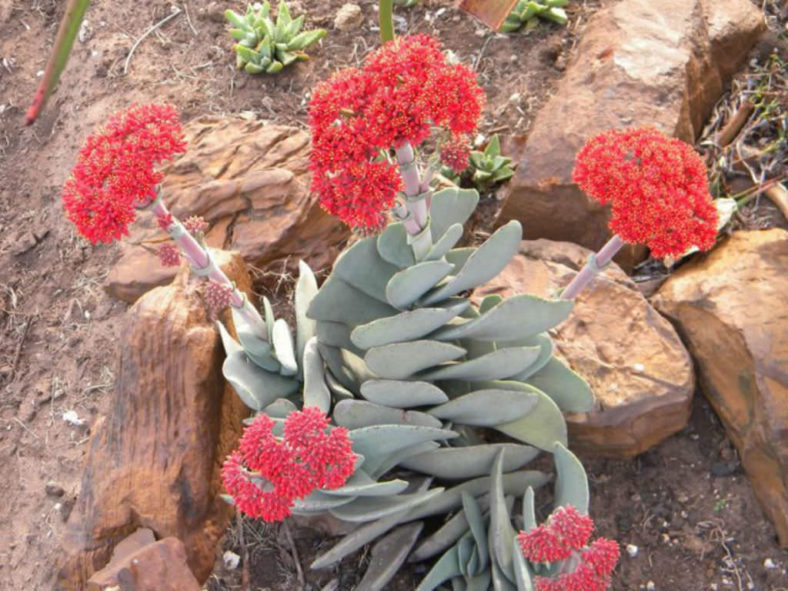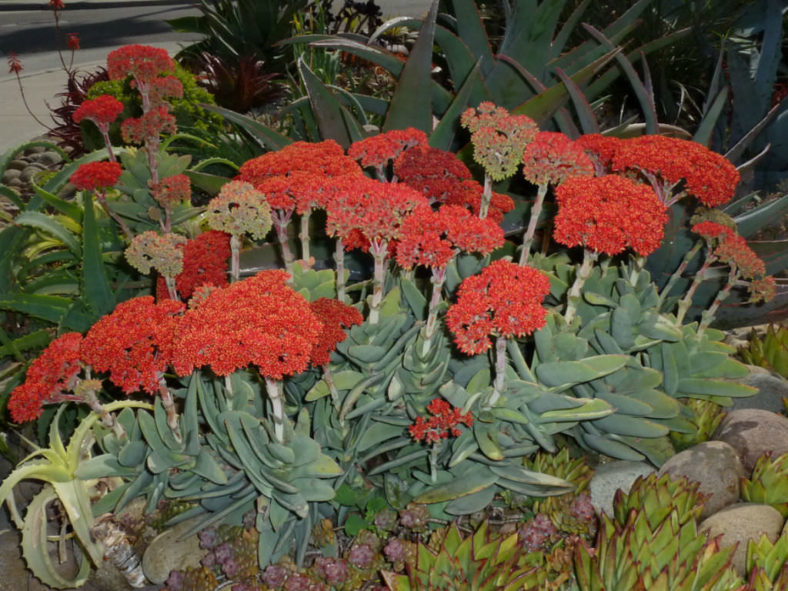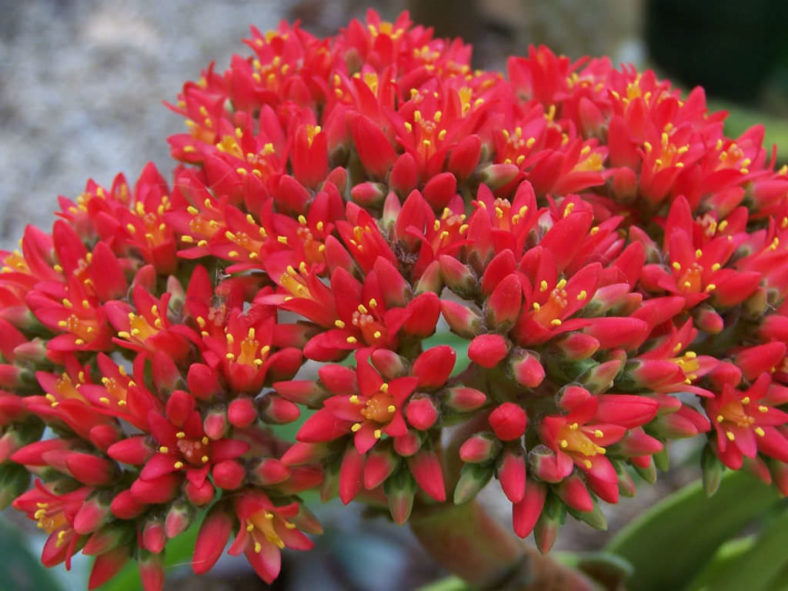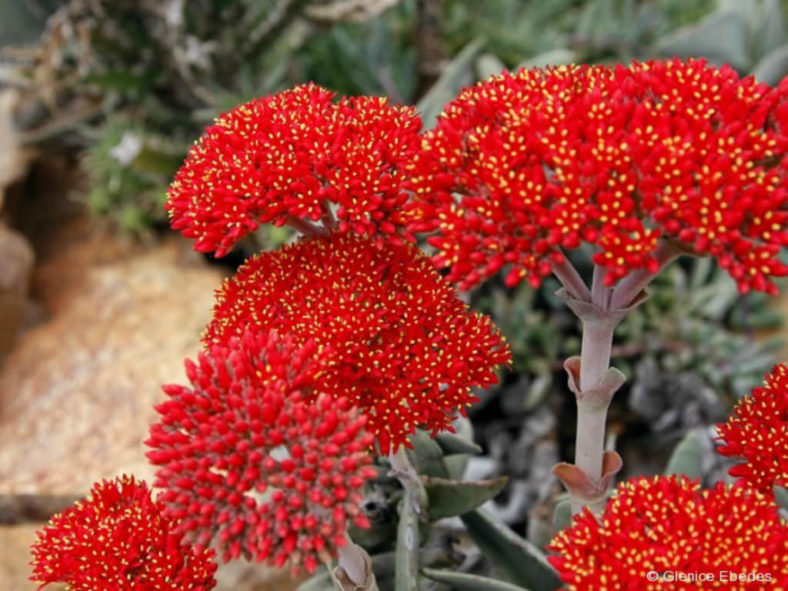Scientific Name
Crassula perfoliata var. minor (Haw.) G.D.Rowley
Common Name(s)
Airplane Plant, Propeller Plant, Red Crassula, Scarlet Paintbrush, Sickle-leaf Red Crassula
Synonym(s)
Crassula falcata, Crassula perfoliata var. falcata, Larochea falcata, Rochea falcata
Scientific Classification
Family: Crassulaceae
Subfamily: Crassuloideae
Genus: Crassula
Etymology
The varietal epithet "minor" (pronounced "MY-nor") means "lesser, inferior, smaller" and refers to the smaller overall size of this variety compared to the typical form of Crassula perfoliata.
Origin
The native range of Crassula perfoliata var. minor extends from the Groot Winterhoek mountains in the Western Cape and Port Elizabeth (now Gqeberha) to Umtata (now Mthatha) in the Eastern Cape province of South Africa. It grows on north, east, and west-facing cliffs along dry river valleys.
Description
Crassula perfoliata var. minor, also known as Crassula falcata or Crassula perfoliata var. falcata, is an interesting succulent with sickle-shaped leaves arranged in overlapping pairs along usually unbranched stems. It can grow up to 2 feet (60 cm) tall and produce new shoots at the base. The leaves are green to grey-green, sometimes with red or purple spots. They can measure up to 4 inches (10 cm) in length and 1.2 inches (3 cm) in width.
This plant is attractive when not blooming but is a show-stopper when its flowers emerge, which are usually bright red, sometimes pink, or rarely white. In summer, the flowers appear in dense, very showy clusters that rise above the foliage. They open slowly and last for nearly a month.
Forms and Hybrids
- Crassula perfoliata var. minor 'Variegata'
- Crassula 'Bride's Bouquet'
- Crassula 'Buddha's Temple'
- Crassula 'Coralita'
- Crassula 'Garnet Lotus'
- Crassula 'Ivory Tower'
- Crassula 'Jade Necklace'
- Crassula 'Jade Tower'
- Crassula 'Justus Corderoy'
- Crassula 'Moonglow'
- Crassula 'Morgan's Beauty'
- Crassula 'Pangolin'
- Crassula 'Silver Springtime'
- Crassula 'Springtime'

Hardiness
USDA hardiness zones 9b to 11b: from 25°F (-3.9°C) to 50°F (10°C).
How to Grow and Care
Crassulas are easy to grow but susceptible to mealybugs and fungal diseases. As with all succulents, overwatering is sure to be fatal, so err on the side of being too dry rather than too wet. Never let your plant sit in water. If you water from beneath by allowing the plant to sit in a saucer, pour off any excess water after a few minutes.
These succulents are generally started by division, offsets, or leaf cuttings. Crassulas can be easily propagated from a single leaf. Sprout leaves by placing them into a potting mix for succulents, then covering the dish until they sprout.
Repot as needed, preferably during the warm season. To repot your Crassula, ensure the soil is dry before repotting, then gently remove the pot. Gently remove the old soil from the roots, discarding any rotted or dead roots. Treat any cuts with a fungicide. Place the plant in its new pot and backfill it with potting soil, spreading the roots as you repot. Leave the plant dry for a week or so, then begin to water lightly to reduce the risk of root rot.
Learn more at How to Grow and Care for Crassula.
Links
- Back to genus Crassula
- Succupedia: Browse succulents by Scientific Name, Common Name, Genus, Family, USDA Hardiness Zone, Origin, or cacti by Genus
Photo Gallery
Click on a photo to see a larger version.


